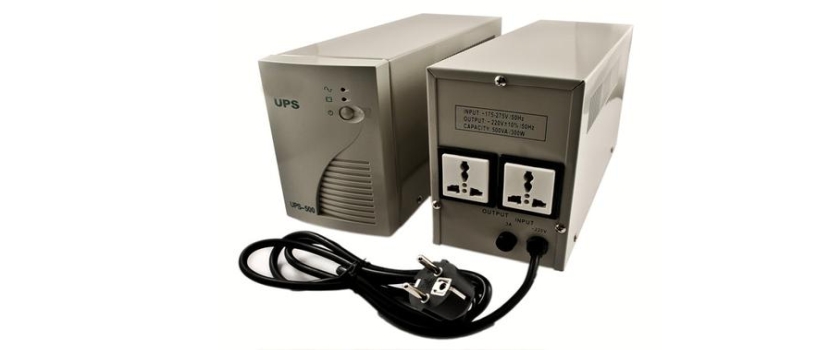hm@neelpower.com +91-9867382364, +91-8879636610
Why You Should Choose A UPS System?
Posted by Admin on July, 20, 2021

The uninterruptible power supply or uninterruptible power source or simply UPS system is a device that is known for providing emergency battery backup when the mains or the input source of power fails. A UPS system is generally used for protecting hardware like telecom equipment, computers, data centres and more. The major difference between an uninterruptible power source and a standby generator or emergency power source is that the former would be able to provide with emergency backup power almost instantaneously and protect the electronics of the consumer from interruptions caused in the input power .The protection helps in situations where the disruption in power can often cause serious injuries and loss of data. Manufacturers of UPS system in Mumbai have classified their different models on basis of the power related problems they can solve. Some common power related problems are:
- Voltage dip: Also known as the voltage sag, this is a situation when there is a reduction in root mean square or rms voltage for a short period of time. This is caused due to several reasons like overload, short circuit, or during the start of an electric motor.
- Voltage spike: A voltage spike is considered as a sudden rise in voltage in an electric circuit. Voltage spikes last for around 3 nanoseconds. These can be caused due to different reasons like lightning, magnetic fields, changes in the voltage use, static electricity, Electromagnetic pulses or short bursts of electromagnetic energy that might occur due to natural or human made reasons.
- Instability in the mains frequency: Such a situation can arise by changing conditions of the environment like temperature, humidity, pressure caused by the atmosphere and vibration. Regular frequency instabilities would eventually lead the power system to get collapsed.
Topologies of a UPS
The topology of an uninterruptible power supply or UPS is basically it’s central or main design. Some popular UPS topologies are:
- Standby UPS: Considered as one of the most common UPS topologies. This type of UPS provides emergency backup for battery power in situations like voltage surges or blackouts. If the utility power falls below or rises above a certain predetermined level also called the safe voltage level, the UPS system switches the internal Direct current or DC inverter power and inverts it to the Alternating current or AC power. This AC and DC inverter is powered with help of an internal storage battery. These kind of UPS system models are used mostly for entry level computers, point of scale or pos system, some basic electronic equipments, security systems and more. The run time for most UPS units is very short. They run for about five to ten minutes. Hence a UPS system manufacturer would always advise their customers for buying a larger UPS, so that it can run longer in emergency situations like blackouts. The standby UPS is also called as the offline system.
- Line Interactive UPS: This type of uninterruptible power source can automatically correct some minor type of fluctuations in power like the under voltages and the over voltages. Even without switching to the battery the voltage is regulated or balanced. It provides with a break of around four to six milliseconds in power when the battery backup transfer is taking place. With help of the line interactive UPS technology wholesale UPS system supplier companies have given a good option between the costs of protecting their devices at a reasonable rate and a moderate cost of operations. Examples of some typical usage situations of line interactive UPS systems are personal computers or PCs, gaming set ups, common consumer electronics, home theatre equipment and some more. In cases of voltage surges, blackouts, over voltages these systems provide with power backups.
- Double Conversion or Online: The double conversion UPS systems are known for providing with power supply uninterruptedly to the critical Information technology or IT loads. This system protects against all type of power problems and provides with an extremely high level of security for the networks. The incoming Alternating current or AC supply of power is received and then converted into Direct current or DC with help of a rectifier that is fed to the battery and the connected load through the inverter. In case the AC input fails, the rectifier gets dropped off the circuit and the device connected to the uninterruptible power source continues to get power through the batteries. After the input power of alternating current is stored, the rectifier continues to carry the load mostly and starts to charge up the batteries. The output in this type of UPS system is a perfect sine wave due to the continuous flow of power.
This entry was posted on July, 20, 2021 at 19 : 03 pm and is filed under Power Supply System. You can follow any responses to this entry through the RSS 2.0 feed. You can leave a response from your own site.

Leave a Comment